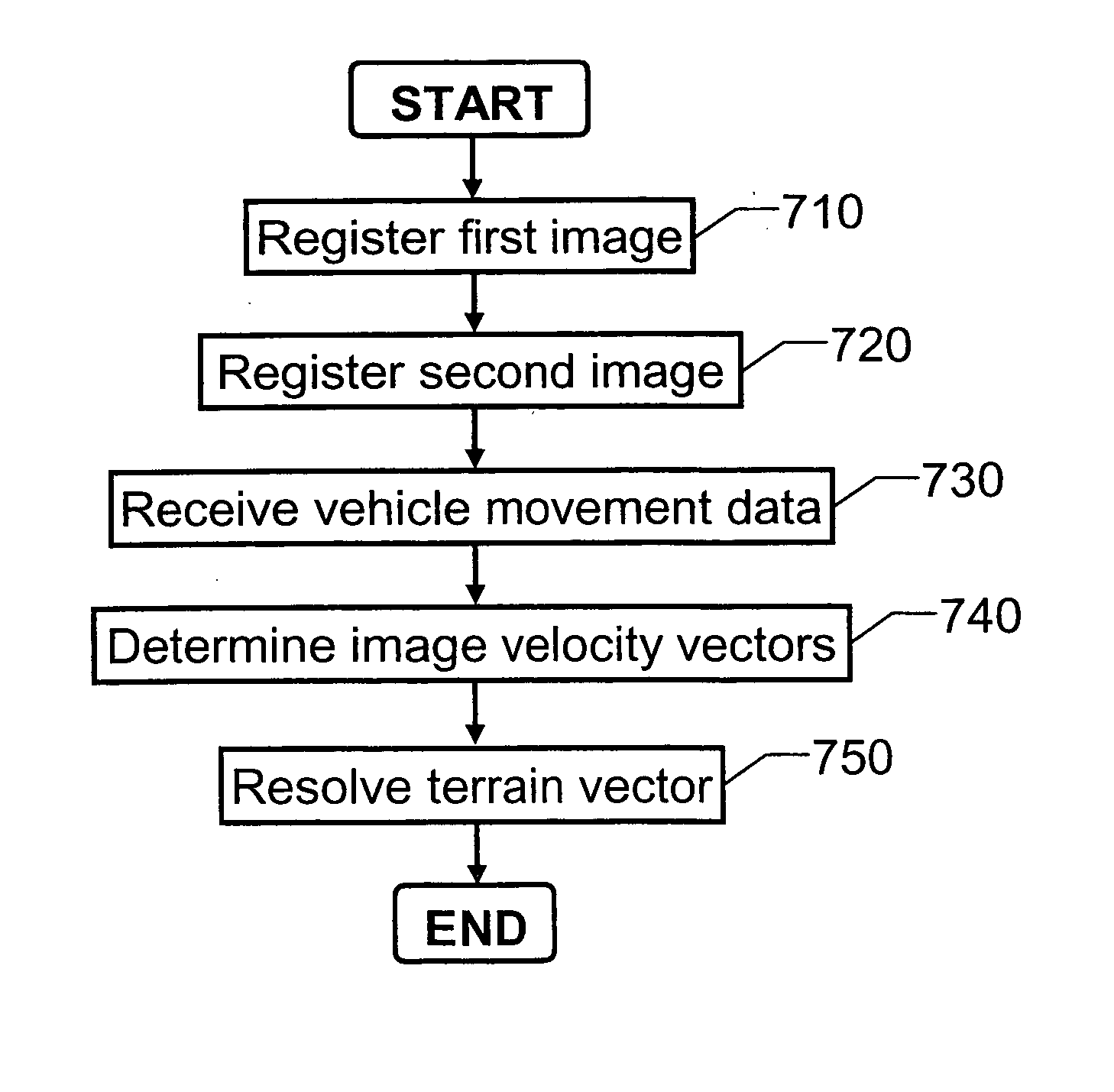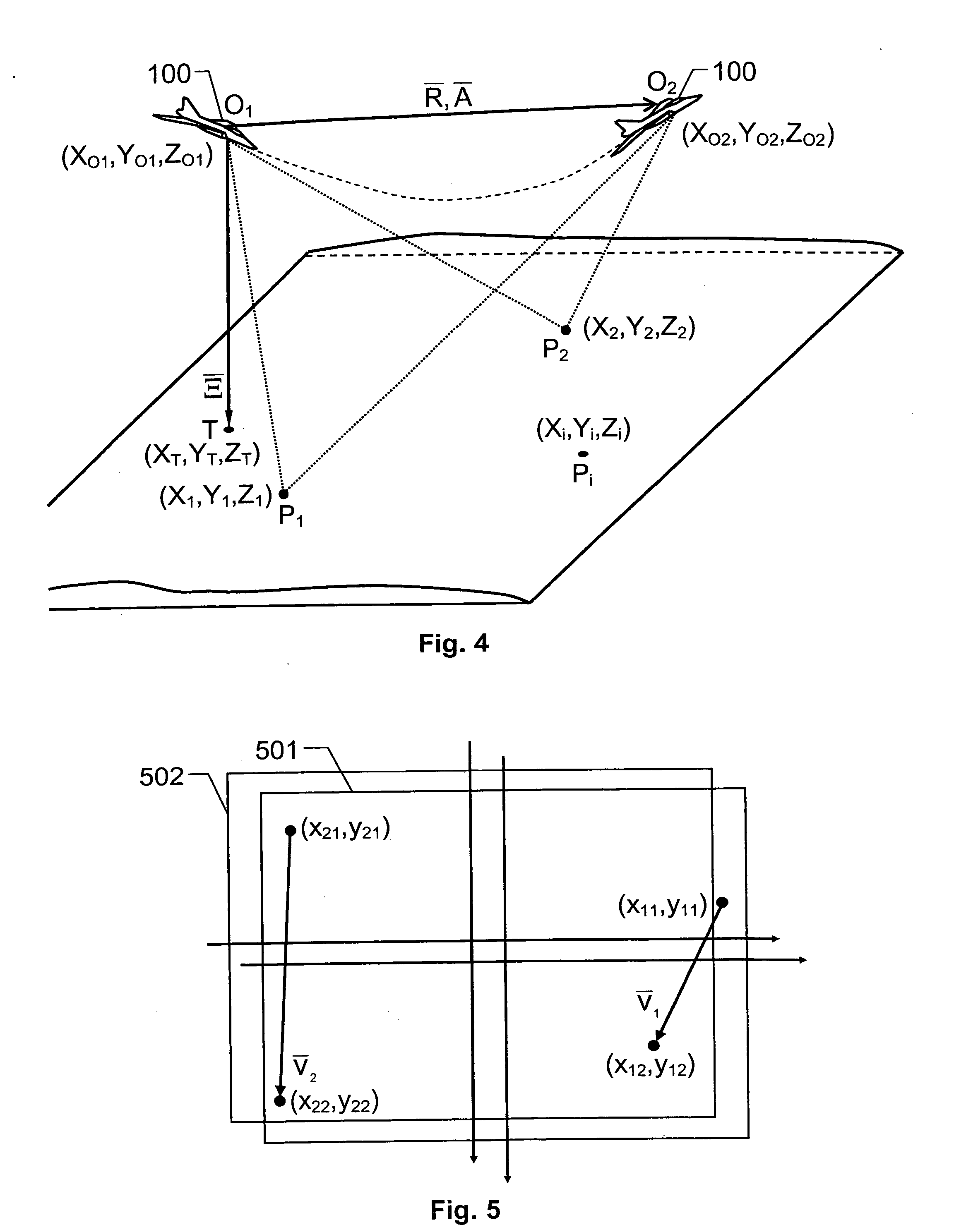Passive measurement of terrain parameters
a technology of terrain parameters and measurement methods, applied in the direction of vehicle position/course/altitude control, process and machine control, instruments, etc., can solve the problems of affecting accuracy, stereo measurement is an unsuitable technology for determining distance, and is generally not advisable to rely on an external system. , to achieve the effect of accurate and reliabl
- Summary
- Abstract
- Description
- Claims
- Application Information
AI Technical Summary
Benefits of technology
Problems solved by technology
Method used
Image
Examples
Embodiment Construction
[0034] A camera may be described geometrically by means of a so-called central projection model. FIG. 1 illustrates such a model of a camera having a focal length f. This means that all light rays that enter the camera cross one another at a focal point O, which lies at a distance f behind an image plane 101 along a central optical axis Z. The image plane 101, in turn, is spanned by coordinate axes X and Y, which are both perpendicular to the optical axis Z. Thus, the focal point O represents a projection center, and the camera direction is given by the optical axis Z.
[0035] Specifically, when registering an image that includes a terrain point P, light from the point P is projected onto the image plane 101, so that the point P is represented at image coordinates (x,y) in the image plane 101. Hence, the camera may be regarded as an angular sensor, since the image coordinates (x,y) and the focal length f can be expressed in polar coordinates (r,θ,Φ), where r denotes an unknown distan...
PUM
 Login to View More
Login to View More Abstract
Description
Claims
Application Information
 Login to View More
Login to View More - R&D
- Intellectual Property
- Life Sciences
- Materials
- Tech Scout
- Unparalleled Data Quality
- Higher Quality Content
- 60% Fewer Hallucinations
Browse by: Latest US Patents, China's latest patents, Technical Efficacy Thesaurus, Application Domain, Technology Topic, Popular Technical Reports.
© 2025 PatSnap. All rights reserved.Legal|Privacy policy|Modern Slavery Act Transparency Statement|Sitemap|About US| Contact US: help@patsnap.com



